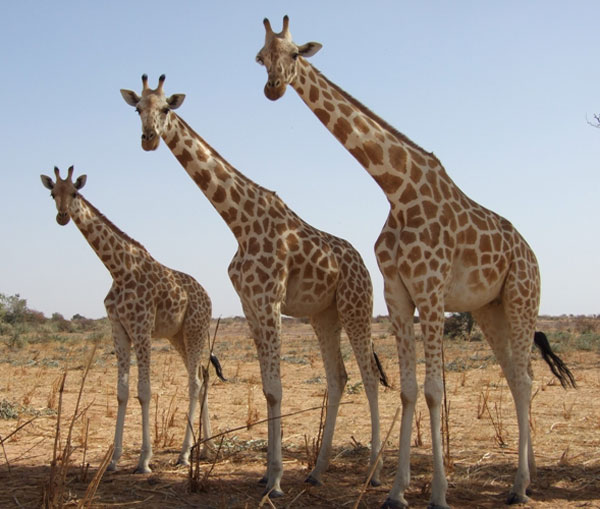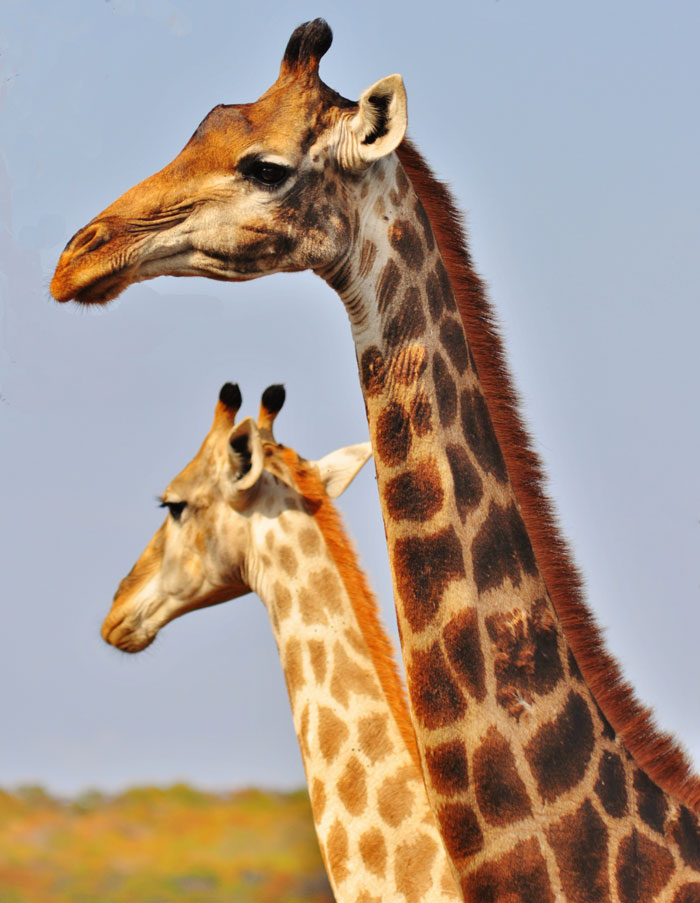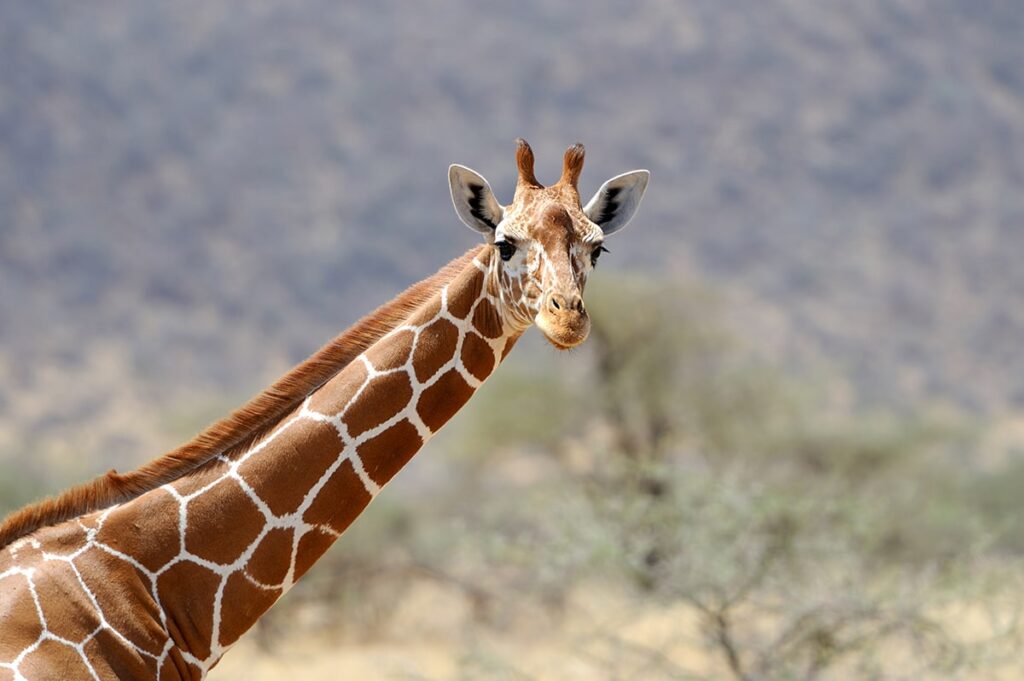- Highest animals: Giraffes are the tallest animals in the world. Giraffe legs – and even newborn giraffe babies – are taller than most humans
- Standing: Giraffes spend most of their lives standing; they even stand up when they sleep!
- Sleep: Giraffes only sleep around 2 hours per day and have one of the lowest sleep requirements of all mammals
- Birth: Giraffes also give birth standing up! At birth, their babies fall more than 1.5 meters (and hit the ground)
- Quick on your feet: Newborn giraffes are able to stand up within 1 ½ hours of birth. After just 10 hours, they can run with their family
- Care groups: Giraffe babies spend most of their time in “care groups” until they are around 5 months old. In the groups, they play with other young giraffes
- Spot patterns: Just like human fingerprints, zebra stripes and dog snouts, there are no 2 identical spot patterns on giraffes; they are all unique
- Blue tongues: Giraffe tongues are 45 cm long and specially adapted to the giraffe’s livelihood; eating parts of plants and trees that are inaccessible to other animals. This applies both to tall trees, but also to plants with thorns and the like. The tongue is also blue, which protects it from sunburn
- Run: A giraffe can run 56 km/h over short distances and 16 km/h over longer distances
- Giraffa camelopardalis: The giraffe’s Latin name is ‘Giraffa camelopardalis’, which comes from the Roman Emperor Julius Caesar. He named the giraffe ‘cameleopard’ because he thought it looked like a cross between a camel and a leopard. Caesar had received the giraffe as a gift from the Egyptians and ended up feeding it to his lions to show his power

Fact: Julius Caesar came up with the name ‘cameleopard’ for the giraffe because he thought it looked like a cross between a camel and a leopard. The giraffe that Caesar had was a gift from the Egyptians. He ended up feeding it to his lions to show his power
Giraffes fighting
Giraffes are social, peaceful animals that rarely fight. Males, however, have a special behavior; they slap their necks against each other. These episodes typically last only a few minutes and rarely result in injury.
More facts about giraffes
- Water: Giraffes’ necks are too short to reach the ground when standing up. Therefore, they have to awkwardly spread their legs to bring their body closer to the ground, for example, when drinking water
- Fluid intake: Giraffes only drink water occasionally. The majority of their fluid intake comes from the plants they eat. Giraffe babies hardly need to drink water, which is convenient as they are the most vulnerable to crocodiles
- No sweat: Giraffes don’t sweat, but are able to regulate their body temperatures according to their environment. All this helps to minimize their water consumption
- Feet: A giraffe’s feet have a diameter of about 30 cm, making them the size of a dinner plate. Hungry giraffes use their hooves to defend their young and are strong enough to kill lions!
- Maver: Giraffes – like cows – have 4 stomachs, which helps them digest their food
- Age: A giraffe’s age can be estimated from its spots; the darker they are, the older the giraffe is
- Pairing: Female giraffes are only willing to mate for a short period of time every 2 weeks. In order for the male giraffe to know when the female is ready, the female regularly urinates in the male’s mouth – and when the taste of the urine changes, she is ready

Fact: A giraffe’s age can be determined by its spots; the darker the spots, the older the giraffe is


